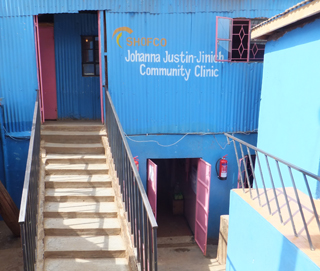Project-Based Learning
I started experimenting with project-based classes because I wanted to see how we could help shape students' skills at getting things done and having a real impact. Our students are great at analysis, solving problems, cracking problem sets, and we can have excellent case discussions, but how does that translate into action? I think it is the responsibility of the university to see that it does, especially in a professional school, but then how do we go about that?
It isn't enough to merely send students out into the world on internships or summer jobs because we want to link these experiences to inquiry analysis, to what we're teaching, and to what happens in the classroom. Basing the class on projects becomes a vehicle for teaching ongoing learning skills, and it helps students become reflective.
...not every problem-solving effort in the developing world should recapitulate what we've done in the West.
15.S07 GlobalHealth Lab is a project-based class that is incredibly expensive to run as students are sent out into the field in sub-Saharan Africa and South Asia. Not everyone can do this, so I am always looking for other engaging and vivid learning opportunities that are less costly.
I decided to push the students who were lucky enough to travel to do better documentation and reflection, and share this with their peers and the community. I thought that better grounding would help the students have a space for reflecting, learning and comparing, and that we could be doing something really scalable.
All of this thinking fed into the design of 15.232, both as a companion to GlobalHealth Lab, trying to explore the issues from a solutions angle, and to shore up and supplement the needed skills and knowledge that would allow us to have a well-rounded set of offerings in global health.
Finding Innovative Solutions for Healthcare Delivery

Students in 15.232 and GlobalHealth Lab worked with Shining Hope for Communities (SHOFCO) in Kibera, the largest slum in Nairobi. SHOFCO provides free education for girls that is linked to community empowerment and poverty alleviation programs. (Photo of SHOFCO clinic entrance, courtesy of an MIT student.)
15.232 came about because we were doing a very problem-driven effort with15.S07 GlobalHealth Lab, looking for presenting problems at the interface of healthcare delivery in low-resource settings to find out and address what the rate-limiting constraints are to delivering more and better care on site. I realized that if we only tried to solve these problems at the point-of-care, we could be missing an opportunity to think of something radical.
It’s the whole challenge between incremental and radical change. I wanted students to appreciate that there are innovative ideas being explored in other non-Western settings, and that not every problem-solving effort in the developing world should recapitulate what we've done in the West.
You can take classes and learn about business-as-usual in the healthcare industry, or about innovations here in the U.S. and in OECD countries to some extent. But nobody was teaching that in a context of emerging-market innovations at the level of an industry sector. I wanted to look at organizations that have figured out what works where that may be unexpected.
Why favor this perspective? We know that great healthcare can be delivered in a boutique style or within a tiny organization, or that some organizations or governments deliver at scale, but the quality is not great. Other organizations are so dependent on donors that they are not sustainable, and have no capital to grow. I thought it would be interesting to find ways in which we find actual enterprises run by a government, NGO, or for-profit trying to deliver healthcare in new ways that have reached, or promise to reach, some kind of high-water mark when it comes to scale, sustainability and quality.
